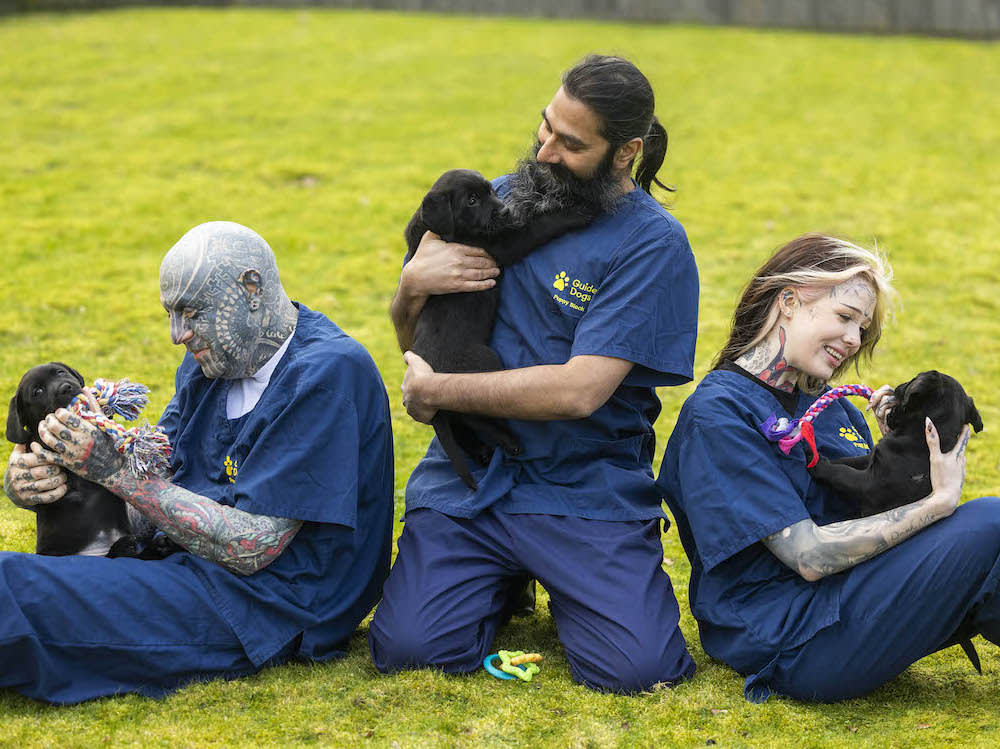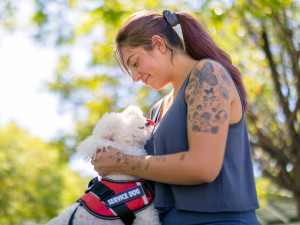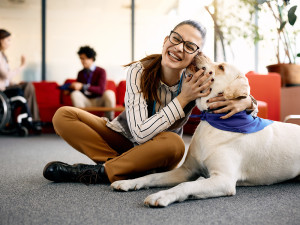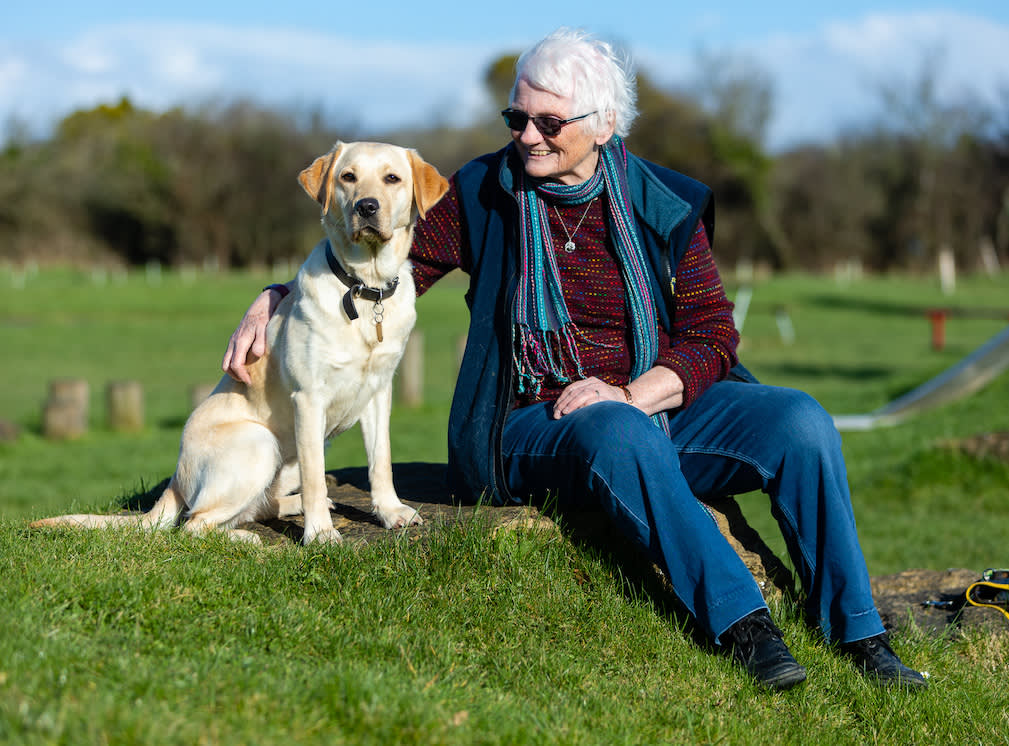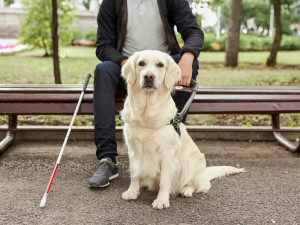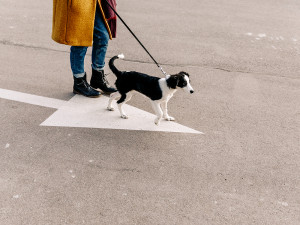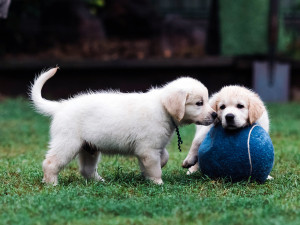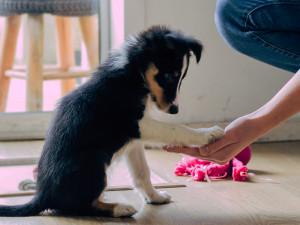Face Tattoos or Coloured Hair? You’re Just What Guide Dogs Need
People with distinctive features step forwards, you’re needed to train the next generation of seeing eye dogs. Here’s what’s involved...
Mum and Dad still giving you grief over your nose piercing, despite you being a fully grown adult? Tell them this: sight loss charity Guide Dogsopens in new tab is now actively seeking people with facial hair, brightly coloured mohawks, facial piercings and tattoos to come forward and help train future guide dogs. Research commissioned by the charity reveals that almost two-thirds (63%) of dogs have reacted with fear or confusion to attributes they have not seen or been exposed to before.
At a recent Guide Dogs socialisation event, eight-week-old guide dog puppies were introduced to individuals representing some of the distinctive characteristics identified. The puppies enjoyed playtime and cuddles to create a positive association and prevent future fearfulness.
Get (totally free) deals for food, treats, accessories, tech and way more pet parenting must-haves.
The charity is looking for new ‘puppy raiser’ volunteers to help future guide dogs become acclimatised to the world they will encounter. It’s seeking all kinds of different people to volunteer, including cyclists, parents to small humans, and people who already have a dog, who can expose the puppy to aspects of daily life like bikes and babies.
Haley Andrews, head of puppy raising at Guide Dogs, says: “Our puppy raisers are vital in ensuring guide dog puppies are given the best start to go on to become future life changers, through the introduction of new environments and experiences, whilst providing a loving home. No matter your distinctive characteristics, all you need to become a volunteer is to commit to showing a guide dog puppy the big wide world they’ll one day be working in.”
The need for more diverse volunteers
A poll surveyed 2,000 UK adults who own a dog on behalf of the Guide Dogs in February 2024 and found that 10% of dogs (the equivalent of up to 1.2 million dogs in the UK) have reacted to people’s facial hair, 1.08 million have reacted to people with facial piercings and tattoos, and 960,000 have exhibited sensitivity towards hairstyles such as mohawks. As a tattooed dog owner myself, I am always surprised by the varied reactions of dogs to my body art. When my dog Bonnie was a puppy, she tried to lick the tattoos on my arm off, and I noticed other dogs were wary of approaching me in the summer when my tattoos were on display.
The pandemic had a devastating effect on the raising of guide dog puppies, with fewer dogs bred than in previous years and less than 50% of dogs qualifying from the training programmeopens in new tab. Guide Dogs is now in a recovery period, but there is still a significant wait for guide dogs. As of September 2023, the average national waiting time was 16 months; however, 37% of the people matched in the last 12 months had been waiting for less than a year.
With the projected increase of the visually impaired population in the UK set to rise to over four million by 2050, Guide Dogs is in critical need.
The importance of socialisation in a puppy’s life
Guide Dogs encourages all puppy owners to look for beards and other physical characteristics as socialisation opportunities. Introduce your dog to people with beards, people in uniform or high vis, and you can even put on hats and sunglasses during playtime to get them used to you looking different. This gets a pup accustomed to different features and accessories so they learn there’s nothing to fear. Socialisation is the most influential stage in a puppy’s life, yet a third (32%) of dog owners are unaware of the critical timing, while 23% don’t understand what it involves.
Haley explains that socialisation should happen at your dog’s own pace, ideally within the first 16 weeks of their life: “The goal of any owner is to have a dog who is comfortable and self-assured in all situations, and this can be achieved by giving puppies a strong bank of calm, positive experiences in early life and continuing them into adulthood. Rather than expose puppies to everything and everyone all the time, people should focus on bringing dogs into a variety of situations at a comfortable rate and helping them practise a calm, neutral response.”
Can I become a Guide Dogs puppy raiser?
Guide Dogs breed around 1,200 puppies a year, and each one lives with a volunteer puppy raiser from when they’re seven to eight weeks old for around a year to 16 months before moving on to the next stage of training. To become a puppy raiser, you must be at least 18, have a loving home, secure outdoor space, and have enough spare time to invest in raising a puppy. While eight-week-old puppies are small and cute, you will need someone at home who is physically able to handle large breed dogs (that tiny puppy will grow to around 25–40kg).
Raising a puppy can be hard work but full of rewards. To become a guide dog puppy raiser, you need to commit to:
Engage with a training programme to prepare your puppy for the next stages of becoming a guide dog.
Provide care and support for your puppy at home, from feeding to grooming.
Introducing your puppy to various environments to increase confidence can be as simple as taking your puppy to the shops, office or park as you go about your everyday life.
Teaching your puppy to be comfortable alone – gradually building up from a few minutes to a maximum of four hours.
Meet your volunteer manager as frequently as needed to discuss any changes or issues with your puppy.
What support will I get as a Guide Dogs volunteer?
In addition to a canine companion and the satisfaction of knowing you’re supporting people with sight loss to live actively and independently, you’ll receive support from your volunteer manager, who will help you work through training modules with your puppy. You will also be offered puppy classes for puppy raisers in the local area to get together, share stories and provide refreshers on training techniques.
While this is not a paid role, volunteering for Guide Dogs should never leave you out of pocket. They’ll pay any expenses related to volunteering, including veterinary costs, food costs and other materials needed for the puppy’s training.
A puppy raiser’s perspective
Iris Chapple has raised 28 puppies for Guide Dogs and explains what makes the role so special: “I have made so many friends through Guide Dogs over the years. Total strangers will talk to you, which is lovely. I meet people; I go places I wouldn’t normally go. It’s a good excuse to get out. I just love it.”
Many will consider saying goodbye to the puppy the hardest part of the role, but as Iris says, “It’s not the same as losing a pet dog. When you have a Guide Dog puppy, of course you love them to bits and you don’t want them to go, but you know they’re going to do a really good job and give someone their independence. Even years down the line, some of the Guide Dog owners will stay in touch. And I can see how much those dogs mean to them – you just can’t beat something like that. I know all dogs are important to their owners. But I don’t think there’s anything more special than a guide dog.”
